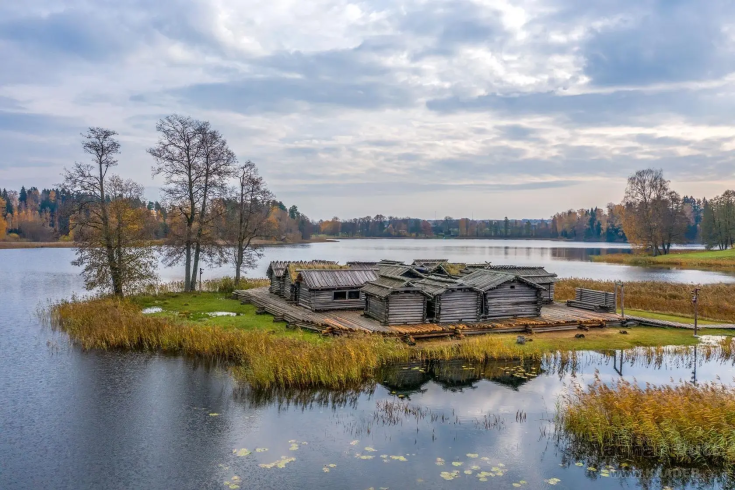Establishing an ecomuseum in the Āraiši
The Policy Learning Platform conducted an online matchmaking for Cēsis Municipality, Latvia, on 24 March 2025. The Cēsis Municipality manages the Āraiši Ezerpils Archaeological Park and requested advice on whether and how should they establish an ecomuseum. During the matchmaking, several key recommendations were shared by the peers Raul Dal Santo, Ecologist and coordinator of the ecomuseum in the City of Parabiago in Italy and Dr. Sc. Tamara Nikolic Djeric, senior curator-cultural anthropologist of the Ecomuseum Batana in Croatia.
Objective of the matchmaking
Cēsis Municipality is exploring the potential to establish an ecomuseum in the rural area of Āraiši, a site rich in cultural and historical significance. The focal point of this landscape is the Iron Age (Viking-era) Āraiši lake settlement. Āraiši also encompasses a diverse array of historical objects, spanning from ancient to recent history, as well as a crafts studio. The area is imbued with rich folk legends, adding depth to its cultural narrative.
The matchmaking session aimed to address the following aspects and questions:
- Relevance and modern context - Is the ecomuseum concept still relevant in today's context? What are the tangible and intangible benefits of establishing an ecomuseum in Āraiši?
- Collaboration and community engagement - Can an ecomuseum function effectively as a public-private partnership? How should the local community be involved, and should formal agreements or contracts be established with stakeholders?
- Territorial definition and governance - How should the territory of the ecomuseum be defined? Should it encompass a homogeneous area, and how should its boundaries be marked?
- Strengths and digital integration - What are the key strengths of an ecomuseum? Could it serve as a repository for digital materials and narratives about the territory, thereby enhancing its accessibility and educational value?
Key insights
During the matchmaking, the following key insights were shared:
- The experts found that Āraiši has the potential to set up an ecomuseum and that the model is flexible enough to meet the local needs. Museums are development tools, not the goal. The main thing would be to set clear goals that are being achieved with the ecomuseum approach and then use the ecological principles to involve local communities in a participatory way.
- Ecomuseums are characterised by community involvement. Respect for the community and how much they are invited to participate is essential. The community also ought to be part of the management system of the ecomuseum. As Āraiši already has a lot of physical heritage as well as different services on the website the main thing that is seemingly missing is a clear governance structure for community engagement.
- Ecomuseums normally function within a defined territorial area. However, it need not follow the administrative boundaries but rather follow the historical cultural areas. A good starting point would be to create a new parish map – to collaborate with the local community to map the local tangible and intangible heritage. The scale should nonetheless be manageable for the public authority.
- An ecomuseum can certainly have a physical centre where a repository of digital materials about the territory is kept for educational purposes. In this way, ecomuseums are not that different from interpretation centres of archaeological sites.

Request a matchmaking session
Are you looking for support with a policymaking challange? Request a matchmaking session!

Collection: Sustainable tourism
Discover our collection on sustainable tourism with hand-picked content by our experts!

